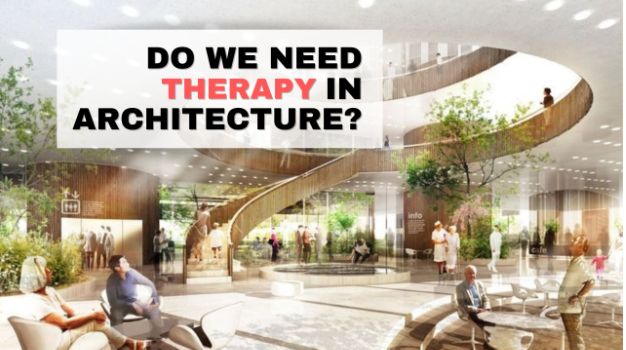
Therapeutic Architecture
INTRODUCTION
Therapeutic architecture can be described as the people-centered, evidence-based discipline of the built environment, which aims to identify and support ways of incorporating those spatial elements that interact with people physiologically and psychologically into design.
Providing therapy with design or specifically designed spaces can be quite a challenging task, it probes a lot of psychological layers of an individual, one must design keeping in mind the uses, functions and many other concerns from the user’s perspective. It can be done in a lot of ways.
WHAT IS THERAPETIC ARCHITECTURE?
All the spaces that add value and provide a sense of therapy to the user have these things in common: The need for a better lifestyle, for a more fulfilled living, for high living comfort and high efficiency.
Therapeutic architecture simply means bringing therapy and architecture together, which in turn boils down to adding therapy through architecture. Therapy is no more a luxury, it is the need of the hour.
WHAT IS THE ISSUE EXACTLY AND WHY IS THERE A NEED OF IT?
The main issue is with our modern day fatigued lifestyle and the architects and interior designers not paying much attention to this domain, decreased social interactions and our interior spaces also dealing with just the issue of functionality and aesthetics and therapeutic spaces are a far cry. It’s on both the ends, the end user should also be receptive to such designs and the creators and designers should also design keeping this pertaining issue in mind, imagine having a tree in the backyard, wouldn’t it be easier for a kid to just go and play there, probably get their hands dirty with some mud, doesn’t it sound natural and therapeutic, this is what therapy aided or healing architecture is all about, it’s about listening to your inner conscience and designing and using spaces in their best habitat.
WHAT ARE THE PLAUSIBLE SOLUTIONS TO IT?
This is a wide ranging issue with a vast domain so there can be multiple solutions to combat this problem and make our built environment more enriching and healing, if we talk about the residential aspect of it, we can design our homes in a way that we have ample amount of space for interactions with natural elements, using natural looking materials for use in the structure and interiors both. Respecting the natural light and wind patterns would also play a major role in contributing to a better and fulfilled space.
WHAT ABOUT EVERYDAY LIFE?
Everyday life is replete with areas where we can aid in making a space therapeutic, it can start with lighting up different corners of the house, especially natural light, it elevates the mood instantly. Colour also elevates a space instantly, using contrasting hues in your spaces by playing with colors in soft furnishings. EX – using a bright bedsheet which is in contrast with your walls or bed or using bright cushions. Another way is to use therapeutic art, that also makes you discover yourself.
If you care to learn further about how workshops are structured at LISAA School of Design, please click below to get in touch with our team.